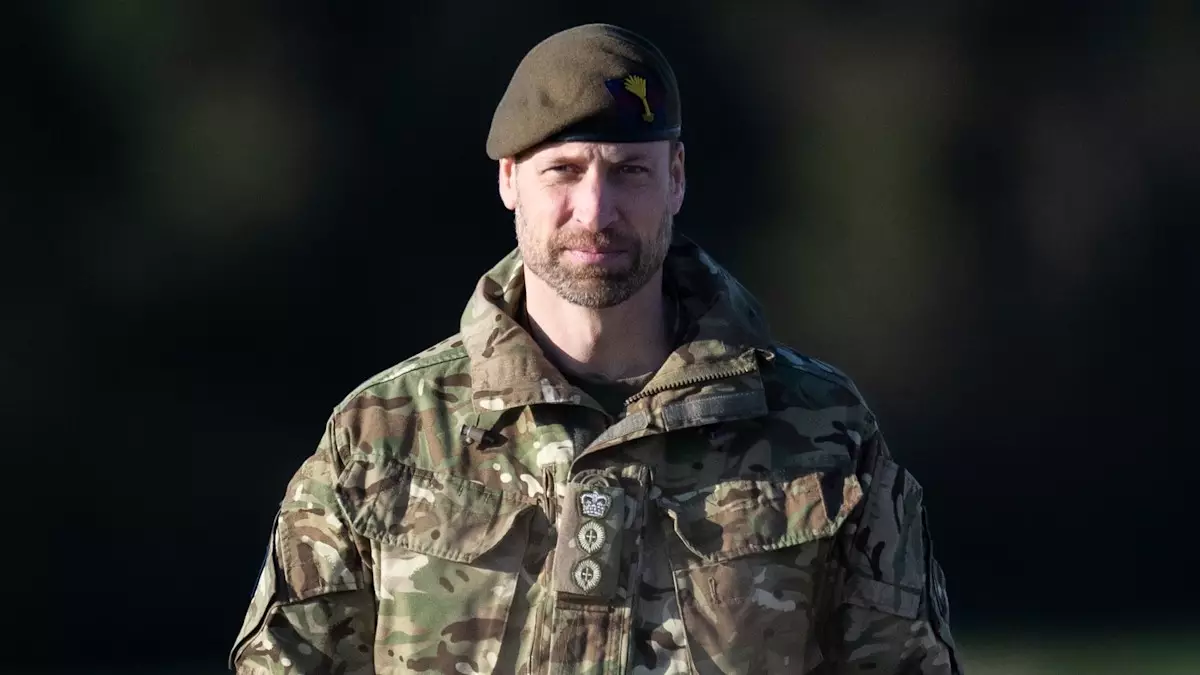Prince William, The Prince of Wales, showcased his dedication to the armed forces during a recent visit to the Welsh Guards on Salisbury Plain. Clad in camouflage to blend in with the soldiers, he participated in a live firing exercise alongside the 1st Battalion. This engagement was significant, not merely as a ceremonial interaction but as a genuine opportunity for the Prince to connect with the troops he represents. Since his appointment as colonel of the regiment the previous year, William has embraced his role with vigor and commitment.
The past two years have been transformative for the Welsh Guards, primarily spent performing ceremonial duties, often referred to as the “blue line.” It is noteworthy that starting January 2025, the battalion will shift back to frontline duties, focusing on improving their specialized weaponry skills. This transition is crucial, especially in light of the ongoing exercises and operational demands facing modern armed forces. The Welsh Guards have had a notable presence in various royal ceremonies, such as the state funeral of Queen Elizabeth II and King Charles III’s inaugural Trooping the Colour. Such responsibilities, while honorable, can often overshadow the fundamental military training that soldiers require to prepare for potential deployments.
During his visit, Prince William engaged in meaningful conversations with the soldiers, particularly with the sniper team. His inquiry about their training experience exhibited his eagerness to understand their challenges and accomplishments. “Really decent training then?” he asked, adding a lighthearted remark about how returning to operational duties from ceremonial duties was a relief. This candid interaction showcased not only the Prince’s compassion but also his understanding of the soldiers’ sentiments towards their roles.
William’s approachability created an atmosphere that encouraged open dialogue. His acknowledgment of the soldiers’ busyness reinforced a sense of camaraderie, essential for fostering morale within military units. Moreover, the exchange emphasized a relatable aspect of leadership—understanding the pressures and demands placed upon personnel. In a world where leaders can often seem distant, Prince William’s informal engagement presented him as a supportive figure, keen on learning rather than dictating.
An intriguing component of the training session was the introduction of drone operations. Prince William had the opportunity to fly a drone, reflecting the evolving nature of modern warfare. Drones have become pivotal in contemporary military conflicts, such as the ongoing war in Ukraine, revolutionizing how battles are fought and strategies are employed. The Prince’s hands-on involvement with this technology signifies not only his commitment to the armed forces but also reflects broader strategic trends in defense.
The platoon commander articulated the significance of the royal visit, indicating that such interactions bolster the soldiers’ morale. With a long-standing history connecting the regiment to the monarchy, having William engage directly with the troops allows for a profound reinforcement of spirit and motivation. This dynamic is especially vital following extensive ceremonial duties, providing soldiers with a chance to demonstrate their skills and receive recognition from a figure of authority.
Prince William’s appearance has sparked interest in various circles, notably his decision to maintain a beard during this engagement. The changes in military grooming regulations have fostered a new sense of identity among soldiers, allowing them to express their individuality while serving. Commentators on social media have lauded William’s look, a reflection of his modernized image and approach to royal duties. This public interest underscores how personal presentation intertwines with perception and reception in royal engagements.
As his royal duties continue, Prince William will partake in further engagements, including the upcoming state visit of the Emir of Qatar. The collaboration with Princess Kate solidifies their role at the heart of royal representation, emphasizing their commitment to diplomacy and international relations. Such events contribute to the broader narrative of the monarchy’s evolving image and their role in contemporary society.
Prince William’s visit to the Welsh Guards symbolizes more than just a ceremonial obligation; it embodies a deep-rooted commitment to service members and their missions. Through hands-on participation, open dialogue, and a willingness to engage in modern military practices, he illustrated the values of compassion and duty. These qualities resonate not only with the armed forces but also with the public, reinforcing the significance of leadership grounded in genuine understanding and connection to the people one serves. As he continues to navigate his royal responsibilities, William’s approach may well set a benchmark for future engagements, blending tradition with modernity in a rapidly changing world.

